
views
Growing Safflower

Begin planting in the early spring after the last frost of the season. Safflower plants won’t grow in the cold weather, so it’s best to wait until the threat of frost has ended before you plant. This depends on where you live, so be sure to research when the last frost normally happens for your area. Once the weather becomes more stable, you can start planting! Avoid starting your seeds inside and then moving them outside, as safflower doesn’t transplant well because of its expansive root system.

Select an area of the garden that gets a lot of sun and has well-draining soil. The plant thrives in sunny, dry areas, so look for a spot that gets sun almost the entire day. Test the drainage of the soil by watering it for 15 seconds, and then seeing how long it takes to drain. Well-draining soil should take about 15-30 seconds to get rid of the water. If the soil doesn’t drain as quickly as it should, but you’ve found a sunny spot, plant the seeds there. The warmth from the sun will help to evaporate excess water, and you can always water less if needed. Improve the drainage by tilling in organic matter, like compost or manure.

Till the soil to remove debris and prepare the ground for planting. Use a rake to mix the soil about 1 in (2.5 cm) into the ground. As you’re raking, remove any rocks and stones. If you use fertilizer in your garden, you can also mix in a high-nitrogen fertilizer to encourage more growth. If you have soil that has a lot of clay or sand in it, mix peat moss and compost into the soil to increase nutrients and improve the soil. You can find peat moss and compost at a nursery or home improvement store, or you can make your own compost.

Place the seeds 8 to 12 in (20 to 30 cm) apart. Since the plants have very large root systems, they need a lot of room to grow. Push the seeds about 1 to 1.5 in (2.5 to 3.8 cm) into the ground, and cover them with about 0.25 inches (0.64 cm) of soil. Gently press down on the soil to secure the seed in place. Tamping the soil keeps the seed from moving when you water it.
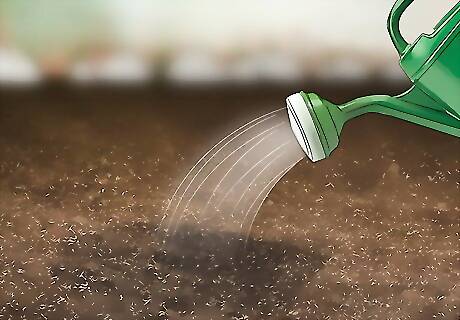
Water the seeds when the top of the soil is dry. Until sprouts emerge from the soil, water the seeds frequently. When you water, use a watering can and disperse the water slowly onto the soil so that the seeds don’t wash away. It should take about 10-15 days for sprouts to emerge, so check the soil every day to ensure that it’s not too dry.
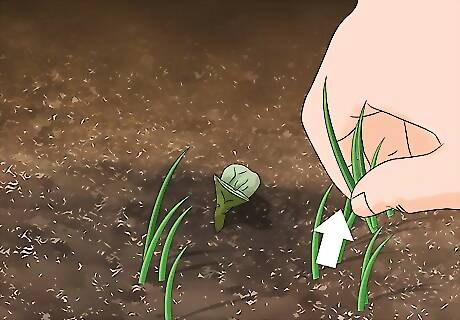
Weed around young safflower sprouts weekly. It’s important to remove competing plants from the soil surrounding young safflower sprouts. Try to tend to the weeds once or twice per week to ensure that the new plants are getting as much sunlight and nutrients from the ground as possible. After about 6 weeks, you can stop weeding as often because the plant will be tall enough to compete with the weeds.

Refrain from watering the plant except in cases of extreme drought. Once the seed sprouts from the ground, stop watering it. Safflowers need dry soil to grow, and they can often get enough water from rain or condensation on their leaves. If there’s no rain for a week or longer, mist the plant for about 15 seconds. Over-watering safflower can cause the roots to rot, which is the main cause of disease in these plants.
Harvesting Safflower
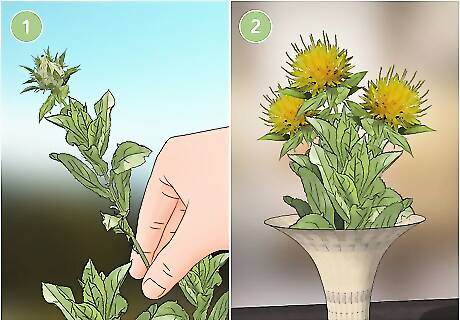
Pick the flowers just before the buds open. Many people like to pick safflower to put in arrangements because of it’s beautiful and unique blooms. The stems of the flower are very rigid, and you can pick or prune them just before they begin to bloom. Once you have them arranged in a vase, the blooms should open within a day or two. You can also use this technique for drying safflower blooms, but be sure not to place them in water.
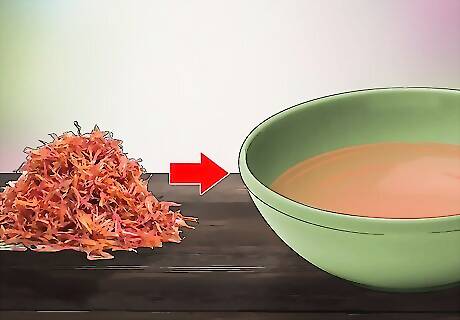
Remove petals from the newly-blooming flowers to use as dye. After the flowers bloom, you can harvest the petals every day by plucking them from the head of the flower. Spread them on a newspaper or paper towel to dry, and save them until you have enough to dye your garment. For most fabrics, you’ll need to have an amount of petals equal in weight to the fabric that you want to dye. For example, if you have 50 grams (1.8 oz) of linen that you want to dye, then you’ll need to gather 50 grams (1.8 oz) of petals.
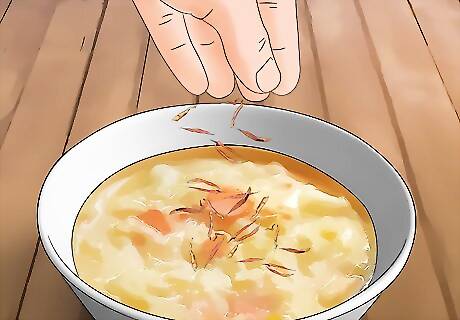
Add safflower blooms to food for a colorful and edible garnish. Harvest the head of the flower or the petals once the bloom is open by cutting it off of the stem. Then, wash the flower with cool water to remove any dirt or insects before you place the safflower on the dish. It takes about 12 weeks after planting for safflower buds to bloom completely, so you should plan to harvest them for garnishing around this time. You can store safflower blooms for a few days by placing them in an airtight container and keeping them out of the sunlight.
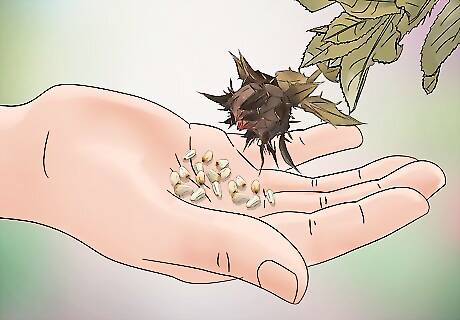
Gather seeds for cooking once the leaves begin to turn brown in the fall. As the leaves begin to die, you can harvest the seeds of the safflower plant to use for cooking or planting next year. Cut the heads of the stems off of the plant and shake the seeds out into a bag or jar. If the seeds won’t come out when you shake them, you can break open the head with your fingers and empty it out that way.
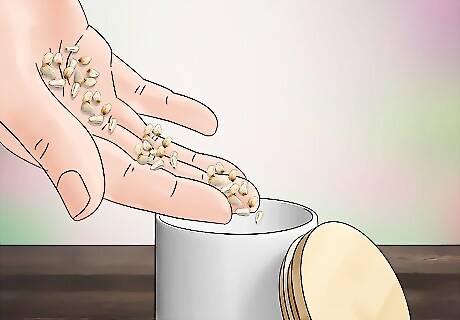
Store safflower seeds in an airtight container out of the sunlight. To keep your seeds safe for cooking or replanting, place them in a jar or container. Put the container in a cupboard or drawer until you plan on using the seeds, and always put it back as soon as you’re done. For long-term storage, keep the container in a cool, dry place, like a garage. Be sure not to place the container in the sun!

















Comments
0 comment